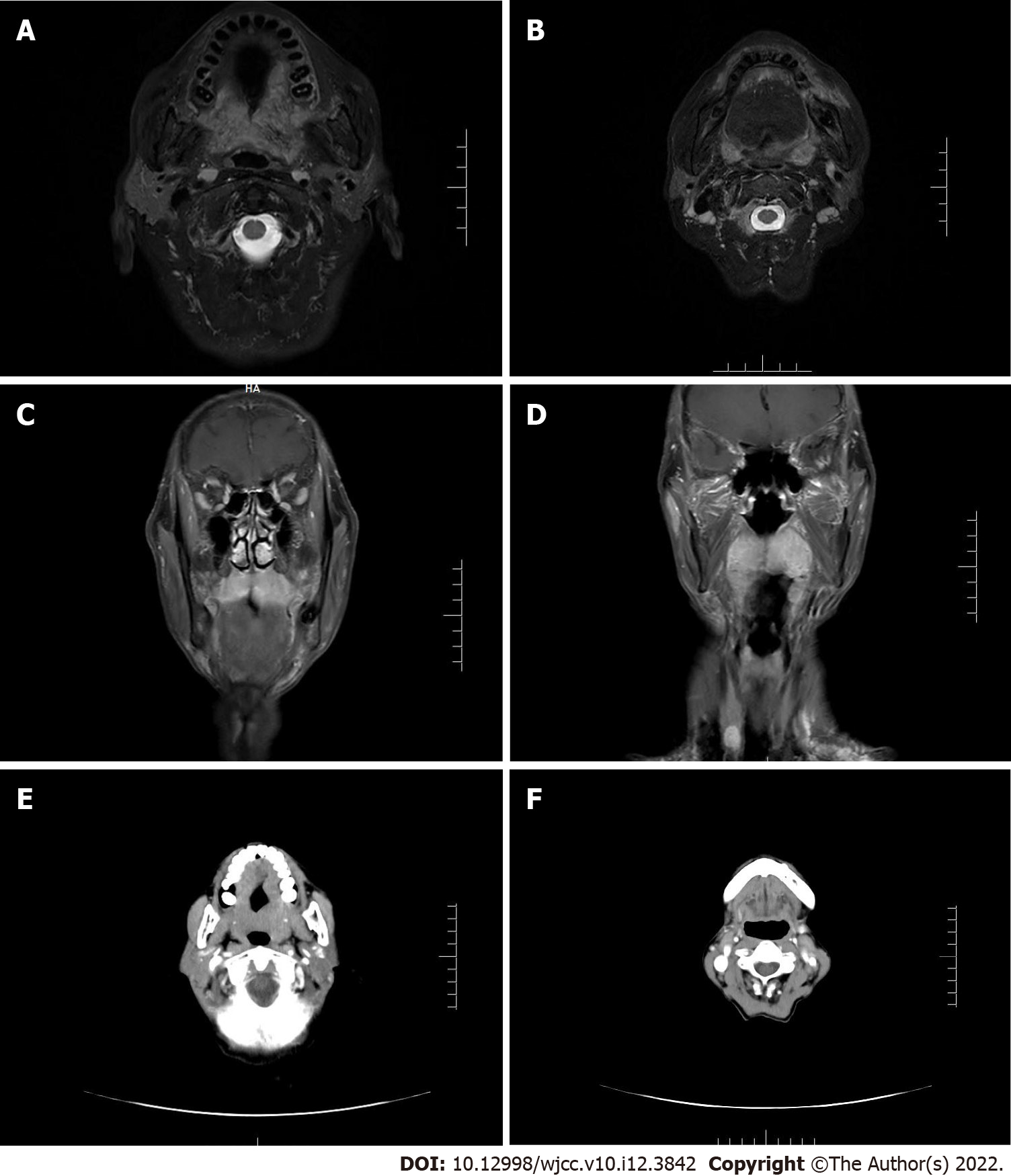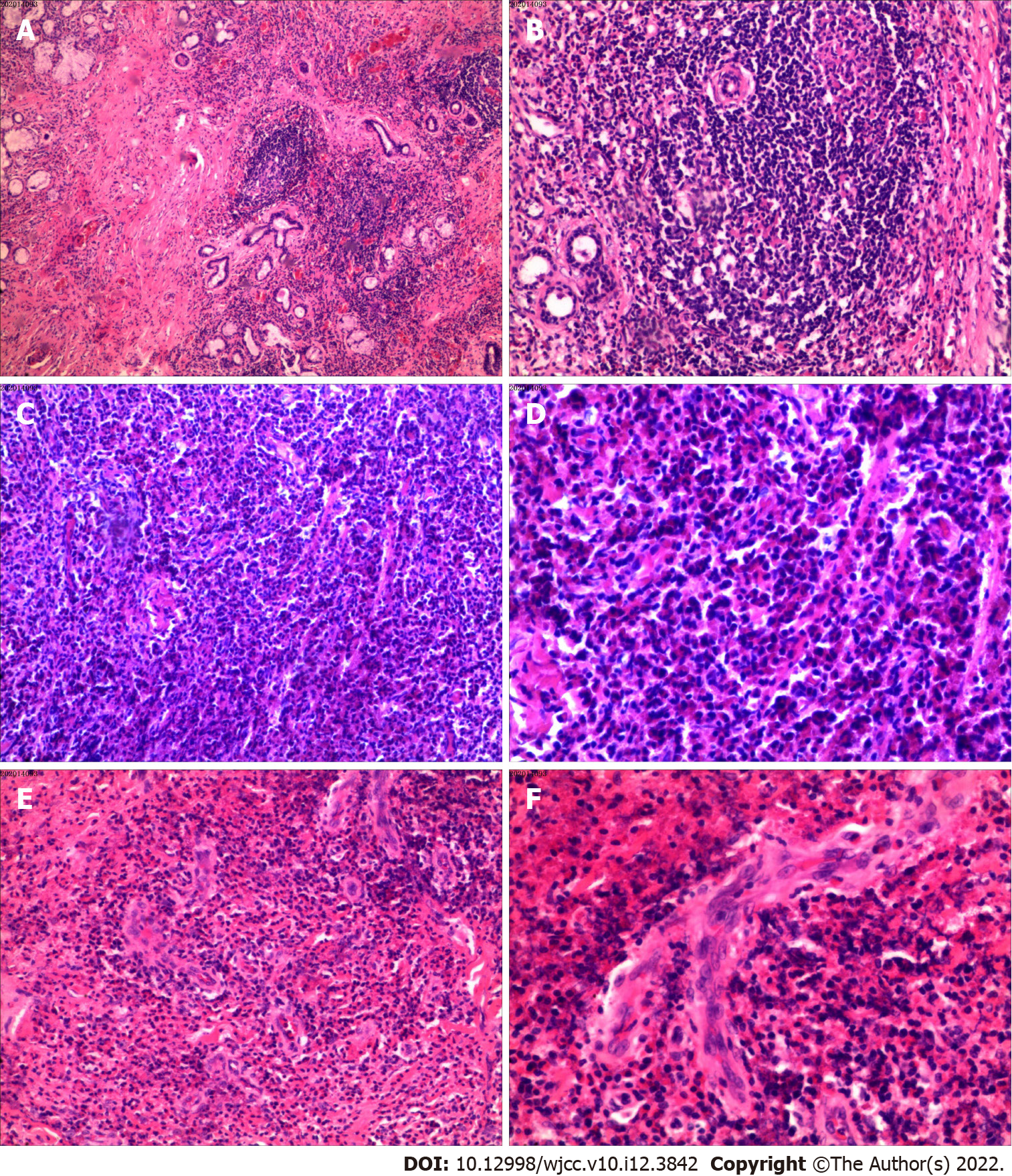Copyright
©The Author(s) 2022.
World J Clin Cases. Apr 26, 2022; 10(12): 3842-3848
Published online Apr 26, 2022. doi: 10.12998/wjcc.v10.i12.3842
Published online Apr 26, 2022. doi: 10.12998/wjcc.v10.i12.3842
Figure 1 Red, intact mass affecting nearly the entire soft palate.
The tumor exhibited bilateral symmetry in the upper right jaw. A: Side view; B: Front view; A partial tumor resection was performed, and the defect was packed and covered by petroleum jelly; C: Distant view; D: Close view.
Figure 2 Magnetic resonance imaging scan revealed a tumor in the upper jaw exhibiting bilateral symmetry and 5 cm × 2 cm in size.
A: Horizontal plane of the upper alveolar bone; B: Horizontal plane of the lower alveolar bone; C: Coronal plane of the nasal cavity and sinuses; D: Coronal plane of nasopharynx and oropharynx. A subsequent computed tomography showed the same lesion in the upper jaw; E: Horizontal plane of the upper alveolar bone; F: Horizontal plane of the lower alveolar bone.
Figure 3 No evidence of malignancy was found.
Final histopathologic examination diagnosed angiomatosis with inflammatory cells. A and B: Lymphoid follicle formation (A: Perspective picture; B: Partial picture); C and D: Eosinophilic abscess area (C: Perspective picture; D: Partial picture); E and F: Obvious vascular hyperplasia (E: Perspective picture; F: Partial picture). B, D, and F are multiples higher than A, C, and E from the same area, respectively. The observed eosinophilic inflammation led to the final diagnosis of Kimura’s disease.
- Citation: Li W. Kimura's disease in soft palate with clinical and histopathological presentation: A case report. World J Clin Cases 2022; 10(12): 3842-3848
- URL: https://www.wjgnet.com/2307-8960/full/v10/i12/3842.htm
- DOI: https://dx.doi.org/10.12998/wjcc.v10.i12.3842











